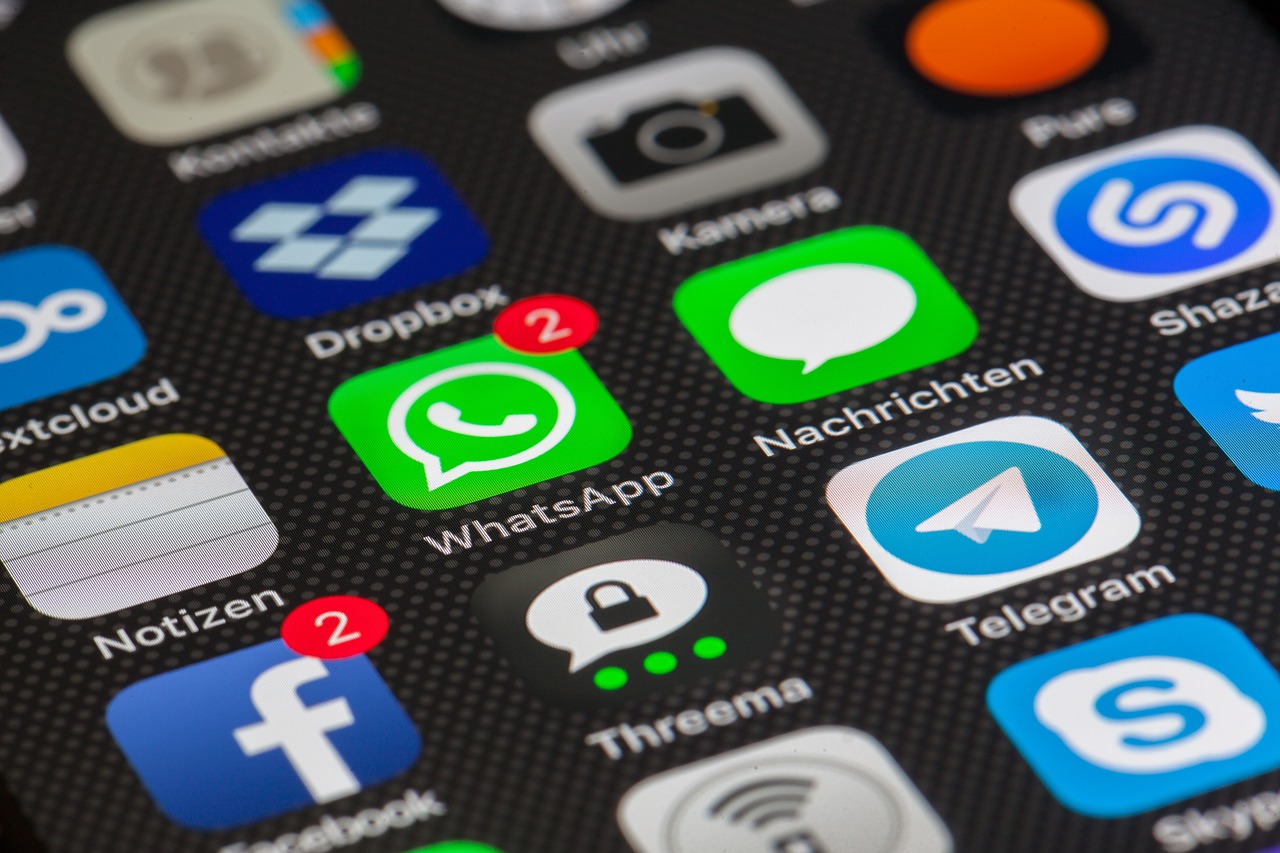Thinking about creating an app? Finally ready to join the ranks of basement billionaires and tech tycoons? Well, hold onto your source code, because we’re diving into the not-so-mystical world of app creation. Spoiler alert: it’s more than just magic and coffee.
General Tips for Making an App
1. The All-Important ‘Original Idea’
Your app should obviously be as original as a rom-com plot. But here’s a little secret: it’s less about inventing something entirely new and more about improving what’s out there. Think of it as making a better pizza, not inventing the concept of food. Look for gaps in the market, user complaints, or just ways you can make an existing idea shinier.
2. Technical Skills: Maybe a Tiny Bit Necessary
Who needs a decade of coding experience when there’s a YouTube tutorial for everything? But seriously, a basic understanding of coding might save you from creating an app that crashes more frequently than a toddler on a sugar rush. If coding isn’t your thing, find a co-founder or hire someone who can spell “JavaScript” without using a spell checker.
3. UI/UX: More Than Just Fancy Acronyms
If you thought UI/UX were just trendy buzzwords, think again. They’re actually the bread and butter of your app. Design something that looks like a Picasso painting, and you might end up with users more confused than a cat at a dog show. Aim for intuitive. Aim for simple. And maybe ask someone other than your mom if it looks good.
4. Actually Listen to Feedback
When someone says your app reminds them of “the time they got lost in a maze”, they’re not reminiscing about their childhood. Feedback is golden. Listen to your users, iterate, and maybe – just maybe – you won’t end up on the infamous list of app flops.
5. Monetization: Not Just a Fancy Word for Making Money
While it’s tempting to dream of yachts and villas, let’s be real: ads are to apps what commercials are to TV shows. A necessary evil. But go easy on them. And as for in-app purchases, make them worth it. If users are going to part with their hard-earned cash, offer them something more substantial than a digital hat for their avatar.
6. Testing, Testing, 1-2-3
Ah, the thrilling world of debugging. It’s like playing ‘Where’s Waldo?’, but with lines of code. Before releasing your app to the wild jungles of the App Store or Google Play, make sure it doesn’t spontaneously combust in the hands of innocent users. Get real people to test it, find the glitches, and iron out those pesky bugs. Remember, an app that works 99% of the time still fails 1% of the time.
7. The Not-So-Silent Marketing Strategy
If you think your app will become viral just because it’s oh-so-amazing, think again. It’s like throwing a party and expecting guests when you’ve sent no invites. From social media campaigns to word of mouth, arm yourself with a strategy. And no, hoping for the best is not a strategy.
8. Constantly Evolve or Face the App Apocalypse
Even if your app becomes the next big thing, resting on your laurels will get you nowhere. Except maybe to the realm of forgotten apps, where the ghost of Flappy Bird still haunts. Keep an eye on trends, gather feedback, and release updates. Your app should be more like a living organism and less like a statue in the park.
9. Customer Service Isn’t Just for Retail Workers
So, a user sends feedback that your app reminds them of wet socks. Ouch. But instead of getting defensive or ignoring it, engage with your users. Offer solutions, be polite, and remember that every interaction is a chance to improve your reputation. A little kindness can turn a one-star rating into a fan for life.
10. Celebrate the Little Wins
App development can be a rollercoaster of emotions – from the highs of finally fixing that one annoying bug to the lows of receiving criticism. But don’t forget to enjoy the journey. Celebrate every milestone, whether it’s your first 100 users or that delightful moment when your app doesn’t crash on your grandma’s ancient phone.
Embarking on the app-making voyage is no small feat. It’s a blend of creativity, tenacity, and more caffeine than one probably should consume. But with the right attitude, a sprinkle of humor, and the undying hope that your creation won’t end up in the digital graveyard, you’re set to make waves in the vast sea of the app world. Godspeed, future app mogul! And if all else fails, there’s always another app idea around the corner. Just, maybe not another weather app. We have enough of those.
Crafting Your Masterpiece for the Apple Orchard: iOS Apps
Jumping into the realm of iOS app development? Excellent choice! Just be ready to familiarize yourself with the whims and wonders of Apple. Here’s your unofficial survival guide:
a. Embrace the Apple Ecosystem
Before diving in, you’ll need to become besties with Apple’s software. Xcode is Apple’s Integrated Development Environment (IDE) for iOS app creation. It comes with everything you need: Swift (Apple’s preferred programming language), the iOS Software Development Kit (SDK), and more tutorials than you can shake an iPhone at.
b. Design Like an Apple Pro
Remember, Apple is like that friend who’s obsessed with aesthetics (think the Instagram influencer of the tech world). Your app needs to feel right at home on iOS. Familiarize yourself with the iOS Human Interface Guidelines. This is your bible for how buttons, text, and graphics should look and behave. Follow it, or face the wrath of the App Store review team.
c. Sign Up and Pay Up
To officially be an iOS developer, you’ll need to enroll in the Apple Developer Program. It comes with a yearly fee, but hey, think of it as your ticket to the big leagues. This membership lets you submit apps to the App Store and gives you access to early software releases and a treasure trove of resources.
d. Testing on Real Devices AND Simulators
While the Xcode simulator is a godsend for initial testing, nothing beats seeing your app in action on a real device. You know, to ensure it doesn’t freak out on the iPhone 25’s super-ultra-retina-not-even-released-yet display.
e. Submission Shenanigans
Once you’ve dotted your i’s and crossed your t’s, it’s time to submit your app to the App Store. Be patient. This isn’t an instant process. Apple reviews each app manually, ensuring it aligns with their guidelines. Rejections are a rite of passage. Take feedback, make tweaks, and resubmit. Rinse and repeat until you see those sweet, sweet download numbers rolling in.
Building for iOS can feel like you’re crafting a meticulously detailed sculpture (with Apple as your ever-watchful museum curator). But with dedication, a sprinkle of creativity, and a willingness to sometimes question your life choices at 2 am, you’ll have an app that shines brightly in the Apple universe. And hey, once you’ve conquered iOS, the world (or at least the App Store) is your oyster!
Your Path to Google Play Glory: Android Apps
Android – the other half of the smartphone world, where customization reigns supreme, and device variety is as vast as the Amazon rainforest. Ready to dive in? Here’s your trusty map to navigating the intricacies of Android app development:
a. Welcome to Android Studio
This is where the magic happens. Android Studio is Google’s official IDE for Android app development. Think of it as your digital workbench, stocked with all the tools you’ll need: from coding in Java or Kotlin (Android’s favorite languages) to testing and debugging. And the best part? It’s free!
b. Design with Flexibility
In the Android world, one size definitely does not fit all. There’s a smorgasbord of devices, screen sizes, and resolutions. The Android Material Design guidelines will be your north star. It helps ensure your app looks spiffy, whether on a high-end Samsung Galaxy or a budget-friendly device you’ve never heard of.
c. Tango with the Android SDK
The Software Development Kit (SDK) is your gateway to the Android operating system. It provides libraries, APIs, and tools to build apps that can do everything from snapping photos to streaming videos. Regularly update your SDK tools because, much like fashion, last season’s APIs are just so passé.
d. Real Devices & Emulators: Test Like There’s No Tomorrow
Android Studio offers a range of emulators to simulate different devices. But, given the sheer variety of Android devices out there, real-device testing is crucial. You know, to ensure your app doesn’t go haywire on that one obscure tablet only sold in three countries.
e. Seal the Deal with the Google Play Console
Once your app is polished and shiny, it’s time for its big debut. Register as a developer on the Google Play Console (there’s a one-time fee) and start the app submission process. Google’s automated tests and reviews are usually quicker than Apple’s, but it’s no free pass. Make sure you adhere to their guidelines to avoid the dreaded rejection.
f. Updates, Updates, Updates!
The Android OS landscape is ever-changing, with new versions popping up almost annually. Keep an eye on the latest features and tweaks, ensuring your app remains compatible and takes advantage of the freshest functionalities.
Embarking on an Android journey requires a bit of adaptability and a lot of patience, given the platform’s vastness. But with a sprinkle of perseverance and a dash of creativity, you can craft an app that stands out in the bustling bazaar that is the Google Play Store. Remember, in the world of Android, the possibilities are as limitless as the variety of devices out there. Happy coding!
FAQ: App Development for the Mildly Confused and Curious
Well, it’s like asking if you need ingredients to bake a cake. While there are no-code platforms out there, having some coding knowledge or a coder on your team gives you more control and flexibility.
It varies from “my monthly coffee budget” to “a down payment on a house”. Factors include complexity, platform choice, whether you hire a team or go solo, and if you insist on swanky features. Always plan a budget first!
Reasons can range from “Oops! I missed that guideline” to “My app does what now?”. Always review platform guidelines, test rigorously, and ensure you’re not unintentionally breaching any rules.
Ah, the age-old debate! It’s like comparing apples (pun intended) and androids. Each has its merits. Consider your target audience, budget, and personal preferences. Or, be brave and tackle both!
Cry a little, eat some ice cream, then get down to business. Use it as a constructive tool. Engage politely with users, understand their concerns, and iterate on your app. Every piece of feedback is a stepping stone to greatness.
Only if you want to stay relevant! Just kidding (not really). Regular updates address bugs, improve user experience, and keep your app in tune with the latest OS changes.
From a few weeks to several months or even years. It depends on the app’s complexity, the platform, and how often you get distracted by cat videos. Remember, quality over speed!
A dash of innovation, a sprinkle of perseverance, rigorous testing, and a hint of luck. And if you find the perfect secret recipe, do share with the rest of us!



